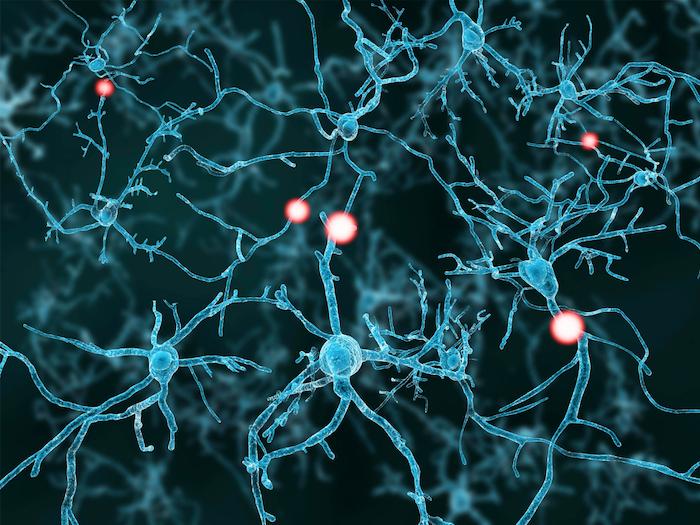Rewrite Abyssal seafloor as a key driver of ocean trace-metal biogeochemical cycles as a headline for a science magazine post, using no more than 7 words
Our analysis of the marine REE cycles reveals an integrated mode of trace-metal cycling that is mainly driven by bottom-up processes such as oxic diagenesis and bottom-intensified turbulent mixing, but also coupled to top-down particle sinking and scavenging. The contrast with the top-down-only view is best illustrated by comparing the distributions of seawater δ13C with […]


Our analysis of the marine REE cycles reveals an integrated mode of trace-metal cycling that is mainly driven by bottom-up processes such as oxic diagenesis and bottom-intensified turbulent mixing, but also coupled to top-down particle sinking and scavenging. The contrast with the top-down-only view is best illustrated by comparing the distributions of seawater δ13C with εNd (Fig. 5a–c). The change of δ13C with water-mass age becomes weaker and its non-conservativity decreases with increasing water depth, as organic carbon cycling mainly happens in the upper ocean. This contrasts with the age-dependent εNd transformation, as Nd recycling is focused on the abyssal seafloor (Fig. 5a–c). Thus, the source and mode of redistribution in the oceans (for example, remineralization versus scavenging and water-column versus sediment processing) is critical to understanding and interpreting the tracer function (for example, as tracers of circulation).
Fig. 5: The bottom-up and top-down biogeochemical cycles.
a,b, Comparing the bottom-up driven tracer εNd (a) with the top-down driven tracer δ13C (ref. 58; b). The non-conservativity of εNd is higher in the abyssal ocean whereas for δ13C it is the greatest at the surface ocean. Compiled seawater data are colour-coded by the depth range. Major Pacific water masses are shown in the plot, including Antarctic bottom water (AABW), Antarctic intermediate water (AAIW), Pacific deep water (PDW) and North Pacific intermediate water (NPIW). c, Conceptual model of bottom-up versus top-down biogeochemical cycles. The background colour is the distribution of the seafloor area in ETOPO 202257. The cycling of a top-down tracer mainly consists of surface uptake and regeneration in the upper ocean. The cycling of a bottom-up tracer is dominated by benthic processing that largely happens on the oxic abyssal seafloor. The top-down and bottom-up processes are linked by particle production and scavenging. The affinity to biogenic versus oxide particles controls the relative importance of top-down and bottom-up processes in a tracer’s distribution. A tracer’s biogeochemical cycle is strongly tied to ocean circulation, which controls the preformed properties and dictates the exposure time to water-column and benthic processing. d, Affinity of selected trace elements to authigenic oxides compared with that to organic matter. The affinity is shown using elemental enrichment factors in oxide-rich sediments (this study) and organic-rich sediments49 (greater than 2 wt% organic carbon content), calculated as metal-to-aluminium-concentration ratio in sediment relative to that in the upper continental crust41. The red line indicates no enrichment. In the boxplot, boxes show the interquartile range; thick lines show the median; whiskers extend to 1.5 × interquartile range away from the boxes; dots are outliers.
Full size image
Our model further highlights the importance of particle-type-dependent scavenging. How strongly a trace metal is partitioned into oxides versus biogenic particles is a key control over its distribution. We qualitatively evaluate this relative affinity by comparing the enrichment factors of trace metals in oxide-rich abyssal sediments with those in organic-rich sediments49 (Fig. 5d). Contrary to REE, for example, cadmium (Cd) appears to represent an endmember that strongly favours association with organic matter, consistent with its water-column profile being the most nutrient-like among trace elements21. Copper, colbalt, nickel and zinc are bio-essential, but they also have a high affinity for Mn oxide. Accordingly, elements like Cu should have scavenged-type water-column profiles, but are actually observed to increase linearly50, like Nd. Our framework thus predicts that there is strong benthic flux of Cu from abyssal sediment, a prediction supported by observations and models19,20,31.
We argue that the benthic impact is widespread among trace metals based on existing porewater data from the abyssal seafloor19,20, and draw attention to some key implications for using TEIs in tracing ocean processes.
First, marine silicate weathering can provide a new source of trace elements and thus may explain disparities in isotopic budgets of some marine metals14. For Fe and Nd, this appears to be a robust conclusion6,8,15,28, and similar arguments have been made for Cu (ref. 50). Beyond a better understanding of tracers, marine silicate weathering may consume as much carbon dioxide as continental silicate weathering51. Our model provides a foundation to re-evaluate the role of silicate weathering, no longer a strictly continental phenomenon52,53, as a buffering agent of climate change and a driver of ocean biogeochemical evolution.
.adsslot_JVaMECRvgb{ width:728px !important; height:90px !important; }
@media (max-width:1199px) { .adsslot_JVaMECRvgb{ width:468px !important; height:60px !important; } }
@media (max-width:767px) { .adsslot_JVaMECRvgb{ width:320px !important; height:50px !important; } }
ADVERTISEMENT
Second, deep-ocean processes, such as hydrothermalism and oxygenation, affect the global ocean budgets of trace elements. For example, hydrothermalism today is the dominant source of both dissolved seawater Mn and thus of particulate Mn oxide54 (Fig. 3c,d and Extended Data Fig. 6). Our model shows that variations in Mn-oxide cycling will exert strong control over trace-metal behaviours (Fig. 3b), even those that are not traditionally seen as sensitive to hydrothermalism and redox55. Our model thus offers a different way of understanding and interpreting a wide range of ocean tracers with respect to hydrothermalism, ventilation and the redox nature of the deep sea.
Finally, our model places emphasis on the geometry of the ocean basins via its impact on abyssal mixing and circulation17. For example, today, bottom-intensified mixing is concentrated near mid-ocean ridges17, and thus the average depth of the crest (about 2.5 km) delineates the vertical reach of the abyssal sedimentary imprint (Fig. 5c). Few, if any, OBMs have investigated the biogeochemical impact of topographic mixing. We argue that the evolution of palaeobathymetry will be important in better understanding of the long-term history of ocean biogeochemistry.
Du, J., Haley, B.A., McManus, J. et al. Abyssal seafloor as a key driver of ocean trace-metal biogeochemical cycles.
Nature (2025).
bu içeriği en az 2000 kelime olacak şekilde ve alt başlıklar ve madde içermiyecek şekilde ünlü bir science magazine için İngilizce olarak yeniden yaz. Teknik açıklamalar içersin ve viral olacak şekilde İngilizce yaz. Haber dışında başka bir şey içermesin. Haber içerisinde en az 12 paragraf ve her bir paragrafta da en az 50 kelime olsun. Cevapta sadece haber olsun. Ayrıca haberi yazdıktan sonra içerikten yararlanarak aşağıdaki başlıkların bilgisi var ise haberin altında doldur. Eğer bilgi yoksa ilgili kısmı yazma.:
Subject of Research:
Article Title:
Article References:
Du, J., Haley, B.A., McManus, J. et al. Abyssal seafloor as a key driver of ocean trace-metal biogeochemical cycles.
Nature (2025). https://doi.org/10.1038/s41586-025-09038-3
Image Credits: AI Generated
DOI:
Keywords
Tags: abyssal ocean recycling mechanismsabyssal seafloor trace-metal cyclingbiogeochemical cycles in oceansbottom-intensified turbulent mixingmarine biogeochemistry insightsmarine rare earth elementsocean tracer function analysisorganic carbon cycling oceanoxic diagenesis processestop-down and bottom-up processeswater-column versus sediment processingεNd and δ13C distributions
What's Your Reaction?
































